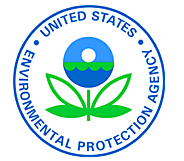EPA Will Propose Achievable Cleaner Fuels and Cars Standard, Slashing Air Pollution and Providing Extensive Health Benefits
Based on extensive input from auto manufactures, refiners, and states, the U.S. Environmental Protection Agency (EPA) today proposed sensible standards for cars and gasoline that will significantly reduce harmful pollution, prevent thousands of premature deaths and illnesses, while also enabling efficiency improvements in the cars and trucks we drive.
The draft rules on auto emissions and low-sulfur gasoline are designed to curb smog-forming, soot and toxic pollution. The new requirements for vehicles and fuels include a mandate that refiners cut the sulfur content of gasoline by more than 60 percent to 10 parts per million in 2017, which is intended to improve the performance of catalytic converters. This means that vehicles built prior to the proposed standards will run cleaner on the new low-sulfur gas, providing significant and immediate benefits by reducing emissions from every gas-powered vehicle on the road.
Following a proven systems approach that addresses vehicles and fuels as an integrated system, today’s proposal will enable the greatest pollution reductions at the lowest cost. The proposal will slash emissions of a range of harmful pollutants that can cause premature death and respiratory illnesses, including reducing smog-forming volatile organic compounds and nitrogen oxides by 80 percent, establish a 70 percent tighter particulate matter standard, and reduce fuel vapor emissions to near zero. The proposal will also reduce vehicle emissions of toxic air pollutants, such as benzene and 1,3-butadiene, by up to 40 percent.
The proposal supports efforts by states to reduce harmful levels of smog and soot and eases their
ability to attain and maintain science-based national ambient air quality standards to protect public health, while also providing flexibilities for small businesses, including hardship provisions and additional lead time for compliance.
Today’s proposed standards – which will save thousands of lives and protect the most vulnerable -- are the next step in our work to protect public health and will provide the automotive industry with the certainty they need to offer the same car models in all 50 states.
By 2030, EPA estimates that the proposed cleaner fuels and cars program will annually prevent up to 2,400 premature deaths, 23,000 cases of respiratory ailments in children, 3,200 hospital admissions and asthma-related emergency room visits, and 1.8 million lost school days, work days and days when activities would be restricted due to air pollution. Total health-related benefits in 2030 will be between $8 and $23 billion annually.
The program would also reduce exposure to pollution near roads. More than 50 million people live, work, or go to school in close proximity to high-traffic roadways, and the average American spends more than one hour traveling along roads each day.
The proposed sulfur standards will cost refineries less than a penny per gallon of gasoline on average once the standards are fully in place. The proposed vehicle standards will have an average cost of about $130 per vehicle in 2025. The proposal also includes flexibilities for small businesses, including hardship provisions and additional lead time for compliance.
The proposed standards will work together with California’s clean cars and fuels program to create a harmonized nationwide vehicle emissions program that enables automakers to sell the same vehicles in all 50 states. The proposal is designed to be implemented over the same timeframe as the next phase of EPA’s national program to reduce greenhouse gas (GHG) emissions from cars and light trucks beginning in model year 2017. Together, the federal and California standards will maximize reductions in GHGs, air pollutants and air toxics from cars and light trucks while providing automakers regulatory certainty and streamlining compliance.
Once published in the Federal Register, the proposal will be available for public comment and EPA will hold public hearings to receive further public input.
Information on EPA’s notice of proposed rulemaking



No comments:
Post a Comment